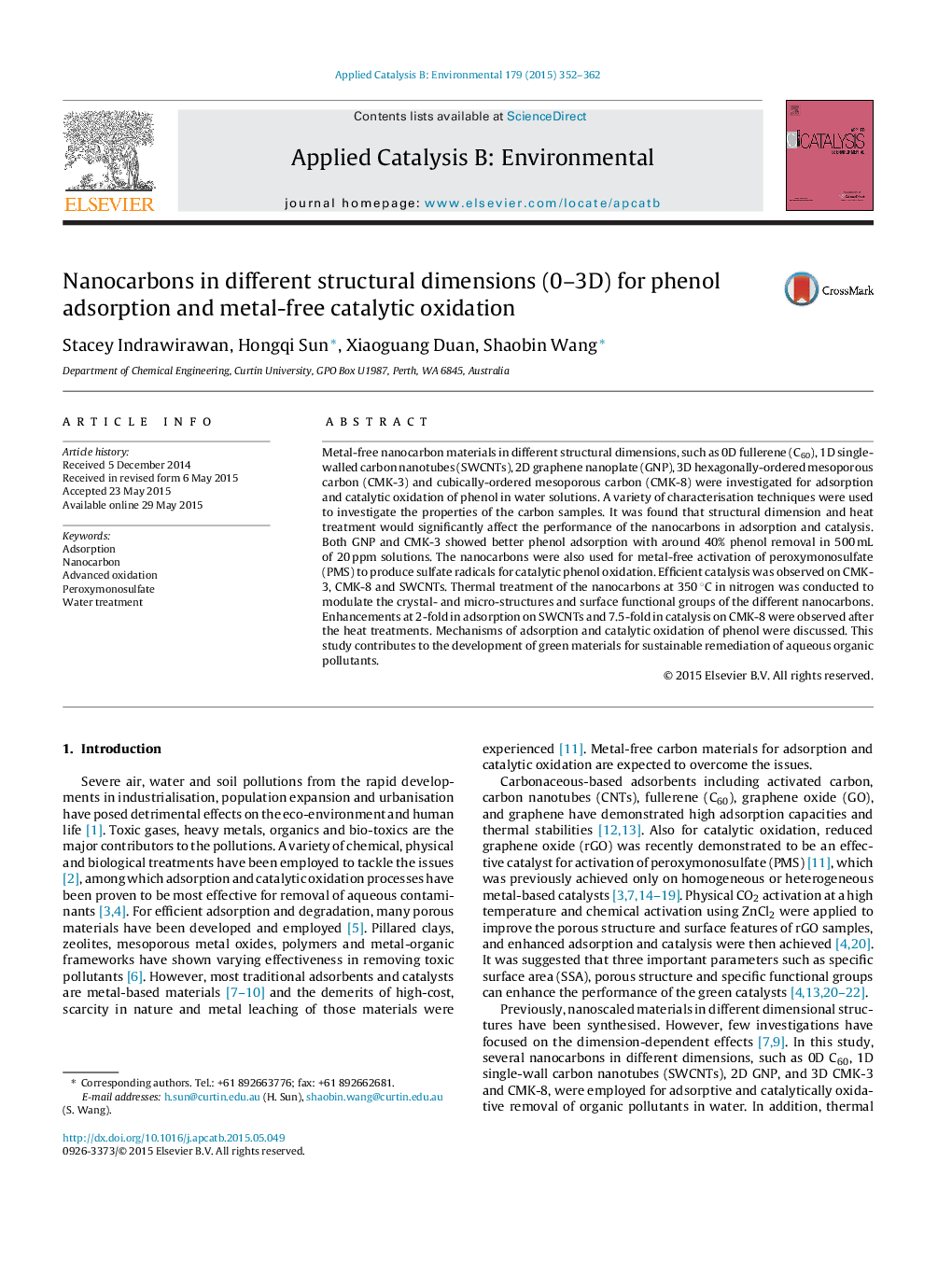| کد مقاله | کد نشریه | سال انتشار | مقاله انگلیسی | نسخه تمام متن |
|---|---|---|---|---|
| 45465 | 46412 | 2015 | 11 صفحه PDF | دانلود رایگان |

• Nanocarbons in different structural dimensions (0–3D) were used for adsorption and catalysis.
• Structural dimension and heat treatment affect the remediation performance of the nanocarbons.
• C60 (0D) exhibits the lowest adsorption capacity and catalytic activity.
• 3D CMK-3 generally presents higher adsorption capacity and catalytic activity.
Metal-free nanocarbon materials in different structural dimensions, such as 0D fullerene (C60), 1D single-walled carbon nanotubes (SWCNTs), 2D graphene nanoplate (GNP), 3D hexagonally-ordered mesoporous carbon (CMK-3) and cubically-ordered mesoporous carbon (CMK-8) were investigated for adsorption and catalytic oxidation of phenol in water solutions. A variety of characterisation techniques were used to investigate the properties of the carbon samples. It was found that structural dimension and heat treatment would significantly affect the performance of the nanocarbons in adsorption and catalysis. Both GNP and CMK-3 showed better phenol adsorption with around 40% phenol removal in 500 mL of 20 ppm solutions. The nanocarbons were also used for metal-free activation of peroxymonosulfate (PMS) to produce sulfate radicals for catalytic phenol oxidation. Efficient catalysis was observed on CMK-3, CMK-8 and SWCNTs. Thermal treatment of the nanocarbons at 350 °C in nitrogen was conducted to modulate the crystal- and micro-structures and surface functional groups of the different nanocarbons. Enhancements at 2-fold in adsorption on SWCNTs and 7.5-fold in catalysis on CMK-8 were observed after the heat treatments. Mechanisms of adsorption and catalytic oxidation of phenol were discussed. This study contributes to the development of green materials for sustainable remediation of aqueous organic pollutants.
Figure optionsDownload as PowerPoint slide
Journal: Applied Catalysis B: Environmental - Volume 179, December 2015, Pages 352–362